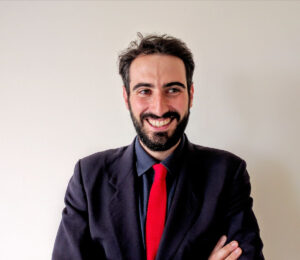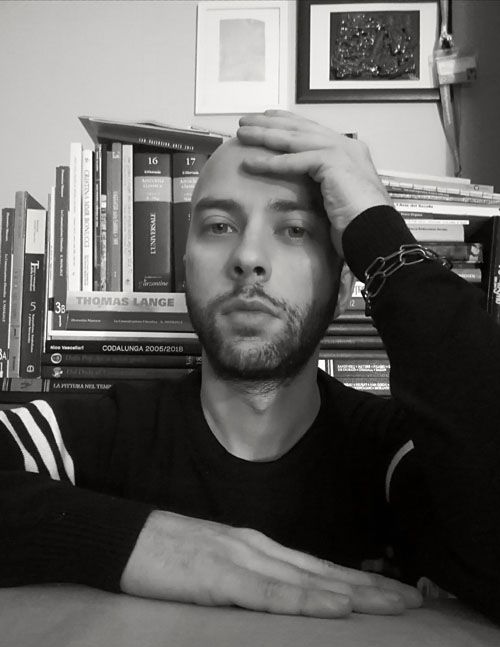Valentino Catricalà is nominated new curator of the SODA Gallery in Manchester and lecturer at Manchester Metropolitan University. Contemporary art scholar and critic, he will be the chief curator of the gallery related to the new SODA – School of Digital Arts; a cultural center focused on the relationship between artistic research and digital technology. The new gallery will open its doors with the aim of creating a hub for art, design and digital production, to share ideas and innovation, through different ways of creativity. Alongside the rich educational program, an innovative research program will be developed simultaneously, in order to face the most important challenges concerning media and digital technologies.
DS: As curator, following which topics are you going to develop the activity of this new artistic center?
VC: We are moving towards a new world. Or, if it is not totally new, at least a world that will be featured by more or less substantial changes. This will be a great challenge for contemporary art and, therefore, for a new Gallery. This is why we are outlining a program as more innovative as possible, that can face this challenge. A Gallery that is an exhibition space but also a dynamic production center, where artists can meet other skills, an incubator of new ideas. It is therefore even more important that the Gallery is connected with a new academic-educational project, with laboratories, workshops, etc. Today, a lot of artists work in team with engineers, technicians, scientists, they work within scientific departments and companies, giving life to new creative and production processes. The role of a cultural institution, I think, is no longer just to propose contents but also to generate new ones, activating new collaborations, to address creative processes.
DS: The foundation of the SODA Gallery is the result of a great economic investment. Do you think that investing in culture can represent a way to overcome some difficulties this period?
VC: Coming from the world of culture, I certainly think investing in culture is very important, especially today. The matter, however, is not to invest blindly just because we are talking about culture. Or working in the world of culture and waiting or hoping to receive funds, and eventually complaining that they do not come. The standards are changing and they will change even more. We have to invest in contexts that really try to propose new ways and, on the other hand, be proactive in networking, fundraising and planning practices. The investment in SODA was this: the funds came because it is a new project with a new identity, which could play an important role in the art world but also in innovation, technology and science.
DS: Instead, experimenting with new technologies, what role can artists play in facing problems of our time?
VC: Once there were two fields, that one of contemporary art and that one of so-called New Media Art (or media art, digital art, etc.) Today this separation is not so clearly defined (as I described in the book “Art and technology of the third millennium”, Electa, 2021, with Cesare Biasini Selvaggi). Artists born in the Eighties or in the Nineties have no interest in these classifications, categories are fading. The matter, which keep on being firm, is the fact that (digital) technology is one of the main languages of our age that is influencing, both in production and in reception ways, the art world (and not only, take a look at the situation we are living and how our lives are ever closer to technological devices). Today more than ever, therefore, there is need to think about these issues, there is need to understand these situations. Talking about Digital Art today is different than talking about it twenty years ago, our intention is not to make a selection among artists who use technology and those who don’t, our intention is to open the doors to those who want to deepen these topics, through the tools that are really changing our age.
DS: What are the horizons offered by this role and by the new context in which you will work, concerning curating and research?
VC: I have worked for many years for national and international institutions and as freelance also. The motivation was to constantly change, to build links of different kinds. The problem is always having to fight for your projects. When there was not what I wanted, I had to create it, as with the Media Art Festival (MAXXI Museum), in partnership with Fondazione Mondo Digitale, or the art section of the Maker Faire – The European Edition. A lot of people did not understand why I used to relate myself in not standard contexts for the contemporary art world, such as the innovation sector. For SODA, instead, this was the plus, it was what they wanted, someone who could unify different fields. Now the main satisfaction is to be in a position that allows to develop research, supported by a structure that can help you to develop the projects you prefer (within certain limits!). In this sector, research is fundamental, we cannot improvise, as often happens, unfortunately. It is important to have a team of trusted people to work with who help you to research and design projects. I hope SODA will be all of this.
DS: Maybe, having a professional call of this level, in such a difficult phase of our age, constitutes an additional responsibility. Do not you think?
VC: There is a lot of ambition behind this assignment, and therefore a lot of pressure. You cannot wrong, considering funding, you cannot make mistakes, that is what I felt from the beginning. This motivates you a lot, it charges you, and, I must say, from this point of view, I was lucky: it is not easy to be motivated in this period and to be pushed by something as strong as a new project. At the same time, however, it is very complex. I have not seen any of my colleagues yet, everything is online. I always say: a new city, in a new online way of working, in a new Gallery not yet built … the essence of the abstract! At the same time, I come from a period of almost a year of smart working, where it is much more normal to work in this way. According to me, I feel the responsibility above all in the need to guess right now what the real changes of the future will be, wondering what the world will need, how I can help, by this position, to bring forward new contents. It is not simple and I think we will understand this along the way.
Info:
 Valentino Catricalà
Valentino Catricalà
 Ian Cheng, Emissary, 2017
Ian Cheng, Emissary, 2017
 Quayola, Promenade, 2018
Quayola, Promenade, 2018
 Arcangelo Sassolino, Untitled, 2006
Arcangelo Sassolino, Untitled, 2006
 SODA Gallery, Manchester
SODA Gallery, Manchester

Contemporary art critic and curator, he has curated exhibitions in galleries, independent and institutional spaces. He has lectured in Italy and abroad. His texts and research are published in catalogs, sector magazines, gallery editions and monographs. He is the curator of artist archives, contributor to specialized magazines and press offices. He collaborates with foundations, public museums, publishing houses and universities on research and curatorial projects.






NO COMMENT